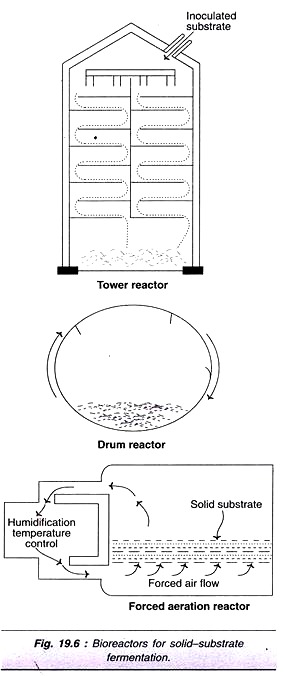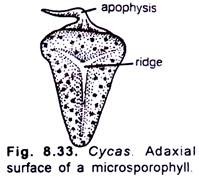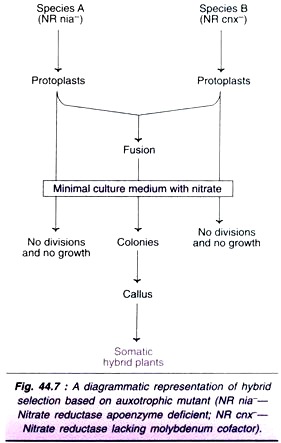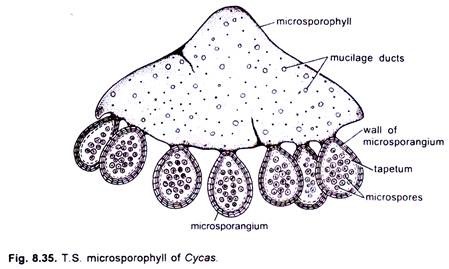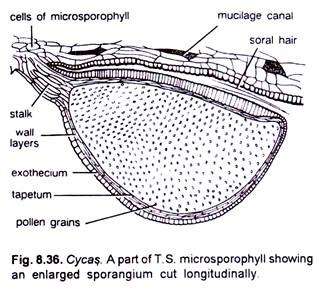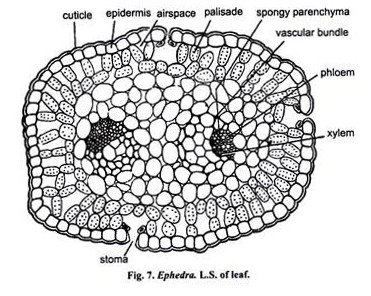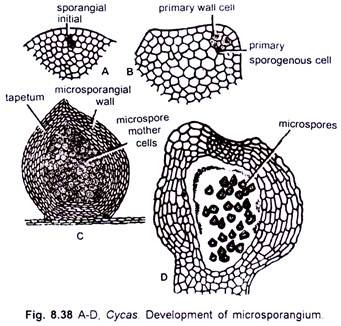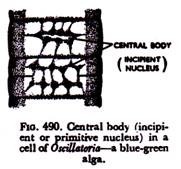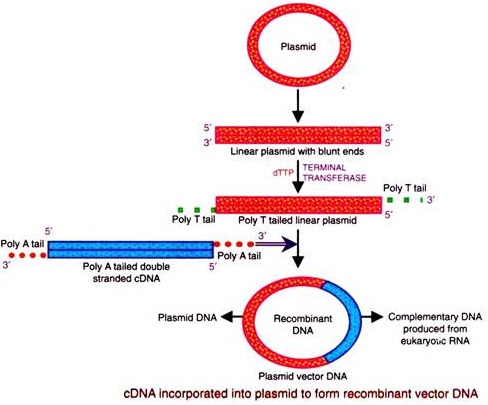Here is a compilation of essays on the ‘Stem’ for class 11 and 12. Find paragraphs, long and short essays on the ‘Stem’ especially written for school and college students.
Essay on the Stem
Essay Contents:
- Essay on the Meaning of Stem
- Essay on the Characteristic Features of Stem
- Essay on the Forms of Stem
- Essay on the Surface of Stem
- Essay on the Kinds of Stem
- Essay on Modified Stem
- Essay on Metamorphosed Stem
- Essay on the Functions of Stem
- Essay on the Economic Importance of Stem
Essay # 1. Meaning of Stem:
Stem is the ascending axis of the plant; develops from plumule of the embryonic axis. The stem may remain simple and unbranched (e.g., many palms) or branched (e.g., mango).
The stems are normally erect and subaerial (e.g., Mango, Mangifera indica), but they may be subterranean (e.g., Ginger, Zingiber officinale) or may creep along the surface of soil (e.g., Indian pennywort, Centella asiatica) or may climb up on any object (e.g., passion flower, Passiflora suberosa; glory lily, Gloriosa superba). In some forms, the stem becomes much condensed and looks like stemless (acaulescent), e.g., onion (Allium cepa, Fig. 2.35), garlic (Allium sativum) etc.
Essay # 2. Characteristic Features of Stem:
1. The stem and/or its branches bear leaves and flowers,
2. It is differentiated into nodes and internodes,
3. The branches are sub-epidermal in origin,
4. The apex of the stem is usually terminated by a bud and is never protected by cap,
5. Hairs, if present, are multicellular,
6. They are usually positively phototropic i.e., grow towards the source of light.
Essay # 3. Forms of Stem:
The forms of stem may vary with plants:
1. Cylindrical, i.e., it shows circular outline in transverse section (wheat, Triticum aestivum of Poaceae),
2. Angular, i.e., it reveals three or four-angles in transverse section (3-angled in sedge, Cyperus rotundus; 4-angled in basil, Ocimum sanctum),
3. Ribbed, i.e., it shows alternate ridges and furrows in transverse section (Casuarina equisetifolia),
4. Fistular, i.e., solid at the nodes and hollow at the internodes (bamboo, Bambusa tulda etc. of Poaceae),
5. Articulated or jointed, i.e., articulation or joint appears in the node which bulges externally in the form of a ring (sugarcane, Saccharum officinarum of Poaceae),
6. Flattened, i.e., plate-like structure (prickly pear, Opuntia dillenii of Cactaceae).
Essay # 4. Surface of Stem:
The surface of the stem may be of different types:
1. Glabrous, i.e., smooth without any emergence (china-rose, Hibiscus rosa-sinensis of Malvaceae),
2. Glaucous, i.e., smooth and somewhat shining (maize, Zea mays of Poaceae; Solarium glaucum of Solanaceae),
3. Hispid or hairy, i.e., covered with different types of hairs (Ocimum sanctum of Lamiaceae; Helianthus annuus of Compositae, Clerodendrum indicum of Verbenaceae etc.),
4. Prickly or spiny, i.e., covered with prickles or spines (Opuntia dillenii of Cactaceae, Bougainvillea spectabilis of Nyctaginaceae etc.)
Essay # 5. Kinds of Stem:
The aerial stems can be divided into several categories:
A. Depending on the ‘nature and size’ they are of two types:
1. Herbaceous, and
2. Woody.
1. Herbaceous:
Plants are small in size with soft stem. They are called herbs.
Depending on the ‘duration of life’, the herbs can be divided into four groups:
i. Annuals,
ii. Biennials,
iii. Perennials, and
iv. Ephemeral.
i. Annuals:
The herbs which complete their life cycle in one season only are called annuals. Viz. mustard, Brassica nigra of Brassicaceae; paddy, Oryza sativa of Poaceae etc.
ii. Biennials:
The herbs which complete their life cycle in two successive seasons are called biennials. In the first season they store up food material mainly in the roots and utilise the food in the next season for the development of flowers and fruits. Viz. carrot, Daucus carota of Apiaceae; radish, Raphanus sativa of Brassicaceae etc.
iii. Perennials:
The herbs which live more than two seasons are called perennials. This type of herbs develop aerial shoots once in a year for vegetative growth and reproduction. The aerial shoot dies during unfavourable season. Viz. turmeric, Curcuma longa and ginger, Zingiber officinale of Zingiberaceae; Indian shot, Canna indica of Cannaceae etc.
iv. Ephemerals:
The herbs which live only for few days and complete their life cycle in that period are called ephemeral. Viz. Balanites aegyptica of Zygophyllaceae.
2. Woody:
The plants are bigger in size with comparatively hard stem.
Depending on the nature of the main stem, they are of three types:
i. Shrubs,
ii. Undershrubs, and
iii. Trees.
i. Shrubs:
These are comparatively small, woody and perennial plants, without clear differentiation of main trunk and lateral branches. Viz. china-rose, Hibiscus rosa-sinensis of Malvaceae; rose, Rosa centifolia of Rosaceae; custard apple, Annona squamosa of Annonaceae etc.
ii. Undershrubs:
Plants having characteristics between herbs and shrubs are called undershrubs. Viz. brinjal (Solanum melongena) and chilli (Capsicum frutescens) of Solanaceae.
iii. Trees:
These are taller and more robust than the shrubs. Initially, the main axis remains unbranched for some distance starting from the ground; the remaining part generally becomes profusely branched. The unbranched erect part is called trunk. Viz. mango, Mangifera indica of Anacardaceae; tamarind, Tamarindus indicus of Fabaceae (Leguminosae), banyan, Ficus benghalensis of Moraceae etc.
B. Depending on their ‘habit’ they are of two types:
1. Strong (Erect), and
2. Weak.
1. Strong (Erect) Stem:
They are more or less cylindrical, unbranched or branched plant body and strong enough to keep the plant in an upright position.
They are of different types:
i. Excurrent:
The tree that takes the shape of a pyramid by racemose branching is called excurrent type. Viz. Polyalthia longifolia (Fig. 2.36A) of Anonaceae, Pinus sp. of Pinaceae etc.
ii. Deliquescent:
The tree that becomes dome-shaped due to cymose branching is called deliquescent type. Viz., mango, Mangifera indica of Anacardaceae; Ficus benghalensis of Moraceae.
iii. Caudex:
The tall tree with erect and unbranched stem having leaf scars and crown of leaves at the apex is called caudex. Viz. coconut palm (Cocos nucifera, Fig. 2.36B) and palmyra palm (Borassus flabellifer) of Arecaceae (Palmae).
iv. Culm or Haulm:
The erect and close jointed stem is called Culm or Haulm. Viz. bamboo (Bambusa tulda, Fig. 2.36C) and sugarcane (Saccharum officinarum) of Poaceae.
2. Weak Stem:
These stems are delicate and are not strong enough to keep them in the upright position.
The weak stems are of the following types:
i. Trailer:
The stem trails over the surface of the soil without rooting at the nodes.
It is of two types:
a. Procumbent:
The stem tip lies flat over the surface. Viz. Ipomoea reptans and Evolvulus nummularius of Convolvulaceae, Basella rubra (Fig. 2.37A) of Basellaceae etc.
b. Decumbent:
The stem tip turns upward, leaving the surface of the soil. Viz., Tridax procumbens of Asteraceae, Lindenbergia indica (Fig. 2.37B) of Scrophulariaceae etc.
ii. Creeper:
The plant that grows horizontally on the soil surface and develops roots at each node is called creeper. Viz. Centella asiatica (Fig. 2.37C) of Apiaceae; Phyla nodiflora of Verbenaceae, Cynodon dactylon of Poaceae etc.
iii. Climber:
The plants that climb up on other plants or objects are called climbers.
Darwin recognised four groups of climbers:
a. Stem climbers or twiners,
b. Tendril climbers,
c. Root climbers,
d. Scramblers.
In addition to these, three other types may be added:
e. Hook climbers,
f. Adhesive climbers, and
g. Lianes.
a. Stem Climbers or Twiners:
The plants can climb up around the object by twining their stem.
According to the direction of twining they are of two types:
Dextrorse i.e., the twining takes place in clockwise direction (from right to left), e.g., Dioscorea alata of Dioscoreaceae, Mikania scandens of Asteraceae, Dolichos lablab of Fabaceae (Fig. 2.38A) etc.; and Sinistrorse i.e., the twining takes place in anti-clockwise direction (from left to right), e.g., Clitoria ternatea of Fabaceae, Ipomoea quamoclit (Fig. 2.38B) of Convolvulaceae, Aganosma caryophyllata and Beaumontia grandiflora of Apocynaceae etc.
b. Tendril Climbers:
In this type, the plants can climb up by means of a very sensitive thread-like structure, the tendril. The tendrils are very sensitive to contact with the object. The tendrils are formed by the modification of different type of organs like stem (Grape vine, Vitis vinifera, Fig. 2.39A of Vitaceae); Passion flower, (Passiflora suberosa, Fig. 2.39B of Passifloraceae); leaves (Lathyrus aphaca, Fig. 2.39C of Fabaceae); petiole (Clematis gouriana; Fig. 2.39D of Ranunculaceae); stipule (Smilax zeylanica, Fig. 2.39E of Liliaceae); leaflet (Pisum sativum; Fig. 2.39F of Fabaceae); leaf apex (Gloriosa superba, Fig. 2.39G of Liliaceae); inflorescence axis (Quisqualis malabaricum of Combretaceae; Antigonon leptopus, Fig. 2.39H of Polygonaceae) etc.
c. Root Climbers:
These plants can climb up by means of adventitious roots developed on the surface of stem on contact with the support. In most of the cases, the root becomes profusely branched and helps in climbing. Viz. Pothos auriens of Araceae; Piper betel (Fig. 2.40A) of Piperace etc.
d. Scramblers or Ramblers:
These plants can climb up by means of thorns, spines or prickles through scrambling and stick to support on other plants. Viz. Calamus rotang (Fig. 2.40B) of Arecaceae; Bougainvillea spectabilis and Pisonia aculeata of Nyctaginaceae; Rosa sp. (Fig. 2.40C) of Rosaceae; Capparis sepiaria and C. zeylanica of Capparidaceae; Zizyphus jujuba (Fig. 2.40D) of Rhamnaceae etc.
e. Hook Climbers:
Plants of this group can climb up with the help of hooks, developed by the modification of flower stalk i.e., pedicel (Artabotrys uncinatus of Anonaceae), terminal leaflet (Bignonia unguiscati, Fig. 2.40E, of Bignoniaceae) and inflorescence axis (Artabotrys uncinatus, Fig. 2.40F, of Anonaceae).
f. Adhesive Climber:
These plants can climb up even on flat surface with the help of adhesive discs. The adhesive discs may develop from the tendrils (Ampelopsis veitchii of Vitaceae, Fig. 2.41) or from climbing roots (Ficus repens of Moraceae and Hedera helix of Araliaceae).
g. Lianes:
These are woody climbers. The plants have long and woody stems, by which they can climb up on big trees or on support. Viz. Bauhinia vahlii of Caesalpinaceae; Marsdenia volubilis of Asclepiadaceae; Hiptage madablota of Malpighiaceae; Ichnocarpus fruticosa, Aganosma caryophyllata and Beaumontia grandiflora of Apocynaceae.
Essay # 6. Modified Stem:
The modified stems are of two types:
A. Subaerial, and
B. Underground or subterranean.
A. Subaerial Modified Stems:
These types of stem are mainly meant for vegetative reproduction.
They are of the following types:
a. Runner:
In this type, a slender and prostrate branch develops from the axil of a leaf close to the ground, which runs along the surface of the soil. After crossing some distance, it produces new leaves and roots at its apex. A number of such branches may develop from a single point, thereby a single plant can spread a large area within a very short time.
Later on, these branches get separated from the mother and form new individuals. Viz. Oxalis corniculata (Fig. 2.42A) of Oxalidaceae; Centella asiatica of Apiaceae, Ipomoea aquatica of Convolvulaceae etc.
Sometimes the runners may be underground and are called sobole (sometimes it may be considered as thin rhizome), e.g., grassy weeds like Imperata cylindrical Saccharum spontaneum; Agropyron sp. (Fig. 2.42B) etc.
b. Stolon:
It is like runner, but does not grow horizontally on the ground. Initially, it grows upward like normal branches, then arches down and touches the ground. At the contact point it produces new plant after developing roots, e.g., Mentha piperita (Fig. 2.43A) of Lamiaceae; Fragaria vesca of Rosaceae etc.
c. Offset:
Like runner, it develops prostrate branch which is shorter and thicker than the runner. The apex of the prostrate branches develops a tuft of roots towards the lower side and a rosett of aerial leaves, e.g., Pistia stratiotes of Araceae; Eichhornia crassipes (Fig. 2.43B) of Pontederiaceae etc.
d. Sucker:
It is an underground runner. Like runner, it develops prostrate branch, which originates from the underground portion of the stem. After growing for a short distance, it develops lower adventitious roots and the apex emerges out into the air and produces leafy aerial shoot, e.g., Mentha viridis of Lamiaceae, Chrysanthemum coronarium (Fig. 2.43C) of Asteraceae etc.
B. Underground or Subterranean Stems:
These stems develop leaves and flowers during favourable condition. The plants manufacture and store food in the underground stem. With the help of this stem, they can perennate during unfavourable condition. Thus this underground stem primarily acts as an organ of perennation and storage, but it also serves the function of vegetative propagation.
It is of the following types:
a. Rhizome:
Rhizome is an elongated, thick, dorsiventral stem or branch. It is differentiated into nodes and internodes and at each node there are brownish scale leaves, having a bud in its axil. Some of the axillary buds develop aerial shoot annually. Usually it branches freely. Large numbers of adventitious roots are developed from the lower side of the rhizome.
A terminal bud is present at the growing point which either helps in the elongation of rhizome or develops into new aerial shoot. The older portion of the stem gradually dies with age. Viz. Zingiber officinale (Fig. 2.44A) and Curcuma longa of Zingiberaceae; Canna indica of Cannaceae etc.
When the rhizome grows vertically instead of horizontally, it is called rootstock, e.g., Musa paradisiaca of Musaceae, Alocasia indica (Fig. 2.44B) of Araceae; Nymphaea stellata and Nelumbo nucifera of Nymphaeaceae etc.
b. Stem-Tuber or Tuber:
Tubers are the fleshy underground branch or a part of it, they develop in the axil of a leaf on the main stem. Initially the apex of these branches swells up due to accumulation of food substances and forms the tuber. Tubers are round, oval or elongated in shape, with many internodes and provided with the eyes or rudimentary buds. Eyes are situated in the depressions and consist of a bud in the axil of scale leaf.
Usually the tubers do not develop roots but during favourable condition (during cultivation) axillary buds develop into new shoot and from the base of stem adventitious roots are developed. Viz. Solanum tuberosum (Fig. 2.45A) of Solanaceae; Cyperus rotundus of Cyperaceae etc.
c. Corm or Solid Bulb:
The corm is more or less round, solid, stout and vertically fleshy underground stem. Buds are developed at the nodes in the axils of thin and membranous scale leaves, remain scattered around the entire body. Some buds develop new corm and the older corm gradually dies. Adventitious roots are developed from the base or all over its body.
The apical bud is comparatively larger in size which grows out and develops into large foliage in early spring and later on flowers. Viz. Amorphophallus campanulatus (Fig. 2.46A) and Colocasia sp. (Fig. 2.46B) of Araceae; Crocus sativus of Liliaceae etc.
d. Bulb:
The bulb is a modified underground stem, it looks like a bud. The stem is extremely reduced to a short and convex disc with compressed internodes. The leaves are developed from the upper surface of the stem. Leaf- bases are thick, fleshy and arranged concentrically, thereby they completely cover the stem.
The upper aerial green portion of the leaf develops and dies seasonally. Terminal bud is present on the upper central region of the stem, which produces aerial leaves. Axillary buds are present in the axil of leaves — some of which may develop new bulbs. Adventitious roots are developed from the lower surface of the stem.
It is of two types:
i. Tunicated or Coated:
In this type, the fleshy leaf bases are arranged regularly and enclosed in a concentric manner. The outer one becomes dry and scaly, which forms the tunica, e.g., Allium cepa (Fig. 2.47A, B) of Liliaceae.
ii. Scaly or Naked:
In this type, the fleshy leaves are overlapped and not covered with a tunica, e.g., Lilium candidium (Fig. 2.48 A, B) and Tulipa gesneriana of Liliaceae.
(It can be mentioned that garlic, Allium sativum of Liliaceae, cites an example of both the above types i.e., tunicated and scaly.)
Essay # 7. Metamorphosed Stem:
In some cases, the stem shows extreme modification and it becomes difficult to find out its actual morphological nature. In such cases, one has to study its origin and internal structure to confirm it as a stem. These extremely modified stems are said to be metamorphosed stem.
The metamorphosed stems are of various types:
a. Thorn or Stem Spine:
These are axillary branches whose growth become arrested and metamorphose into hard and sharply pointed structures, the thorns. The thorn acts as a defensive organ. They are sub-epidermal in origin.
They may be simple, e.g., Duranta plumieri (Fig. 2.49A) of Verbenaceae; Hygrophyla auriculata (Fig. 2.49B) of Acanthaceae; Aegle marmelos (Fig. 2.49C) of Rutaceae; Prunus sp. (Fig. 2.49D) of Rosaceae; or compound, e.g., Carissa carandas (Fig. 2.49E) of Apocynaceae; Flacourtia cataphracta (Fig. 2.49F) of Flacourtiaceae etc.
These are proved to be metamorphosed, because of the following facts:
i. They develop in the axil of leaves,
ii. They often bear foliage and lateral branches,
iii. They have internal structures like the stem.
b. Stem-Tendril:
It is a stem which becomes metamorphosed into a slender and coiled structure which helps to climb the support. In passion flower, Passiflora suberosa (Fig. 2.39B) of Passifloraceae; the tendril develops in the axil of the leaf.
In Vitis quadrangularis (Fig. 2.33A) of Vitaceae, the terminal bud becomes modified into a tendril. From the axil of the leaf another branch develops, whose apex similarly becomes modified into tendril. Thus the branching is of sympodial type. The branches become straight and the tendrils are present opposite to the leaves.
c. Phylloclade or Cladophyll:
It is the flat leaf like metamorphosed stem, consisting of many nodes and internodes and functions as leaf. The leaves may either fall off or become very small or modified into spines, thus the rate of transpiration becomes reduced. Sometimes it acts as an organ of water storage. Viz. prickly pear, Opuntia dillenii (Fig. 2.50A) of Cactaceae, Muehlenbeckia platyclados (Fig. 2.50B) of Polygonaceae etc.
d. Cladode:
The metamorphosed leaf-like branches consisting of one internode are called cladode. They develop in the axil of minute scale leaves and serve the function of foliage leaves, i.e., for photosynthesis, e.g., Asparagus racemosus (Fig. 2.50C) of Liliaceae etc.
e. Pseudobulbs:
It is a modified stem which generally consists of one internode and becomes a fleshy and tuberous structure. It can store excess moisture and can survive during unfavourable condition. This is found in aerial orchids (Fig. 2.51).
f. Bulbils:
It has already been described under the section “modification of bud” (Fig. 2.33B-E).
A schematic representation of classification of stem depending on their habit has been given in Table 2.4.
Essay # 8. Functions of Stem:
A. Normal Functions:
The normal functions are:
1. Mechanical – gives support to branches, leaves and vegetative structures.
2. Physiological – conduction of water with minerals and translocation to the different parts of the plant.
B. Special Functions:
In addition to normal functions, the stems also carry some other functions:
1. Water storage, in many cacti;
2. Food storage, in underground modified stems;
3. Assimilation, in cladodes and phylloclades;
4. Defence structures, as thorns in Aegle marmelos of Rutaceae, Duranta plumieri of Verbenaceae etc.
5. Climbing, by stem tendril in Vitis vinifera of Vitaceae;
6. Vegetative reproduction, in the subterranean and subaerial modified stems.
Essay # 9. Economic Importance of Stem:
Economically, the stems are very much important and serve many useful purposes:
1. Sugar:
Stem containing sap of sugarcane plant is highly rich in sugar. It is used in the preparation of sugar, molasses and also as drinks after extracting by machine or by chewing.
2. Condiments:
Rhizomes of ginger (Zingiber officinale), mango ginger (Curcuma amada) and turmeric (Curcuma longa) of Zingiberaceae are used as condiments.
3. Arrowroot:
Rhizome of Indian arrowroot (Curcuma zeodoria) is used in the preparation of arrowroot, but of inferior quality.
4. Timber and Fuel:
Stems of the plants like Sal, Shorea robusta of Dipterocarpaceae; Teak, Tectona grandis of Verbenaceae, Albizia lebeck, Melanoxylon brauna of Fabaceae and Pinus wallichiana of Pinaceae are used as timber and those of Tamarindus indicus and Acacia nilotica of Fabaceae are used as fuel.
5. Paper:
Stems of Bamboo, Bambusa tulda, B. vulgaris etc. of Poaceae; Eucalyptus sp. are used in the preparatron of paper. Stem bark of Broussnetia papyrifera of Moraceae is used in paper-making. Stem of castor-oil plant (Ricinus communis of Euphorbiaceae) yield pulp and cellulose, are used in the preparation of cardboard-containers, newspapers etc.
6. Fibre:
The fibres present in the stem of jute (Corchorus capsularis and C. olitorius of Tiliaceae), flax (Linum usitatissimum of Linaceae), Crotalaria juncea of Fabaceae, hemp (Hibiscus cannabinus of Malvaceae), etc. are utilised for the manufacture of gunny bag, rope, clothing’s and other commercial commodities.
7. Medicine:
Various types of medicines are prepared from the stem of different plants:
a. Quinine:
It is obtained from the bark of Cinchona calisaya, C. succirubra, C. ledgerians, C. officinalis of Rubiaceae used to control malaria.
b. Other Medicines:
Dry rhizomes of ginger, Zingiber officinalis of Zingiberaceae are used to relieve cough; decoction of bark of Saraca indica of Fabaceae is used as a remedy for menstrual disorder of women; stemtuber of Cyperus rotundus and Scirpus grossus of Cyperaceae are used as medicine.
8. Cinnamon:
It is a product of stem bark of Cinnamomum zeylanica of Lauraceae, used as spice.
9. Rubber:
It is prepared from latex of the stem of different plants like Ficus elastica of Moraceae, Parthenium argentatum and Taraxacum koksaghye of Compositae, Hevea brasilensis and Manihot glaziovii of Euphorbiaceae.
10. Gums, Resins and Balsam:
These are the secretions of stem of various kinds of plants. Gum from the bark of Acacia nilotica of Fabaceae, is used to stick papers etc.; gum from Acacia catechu, called ‘Khair’ or ‘Katha’ of commerce, is used for dressing betel leaf.
Resin, methyl alcohol and turpentine are exctracted from the stem of Pinus roxburghii. Balsam, a sticky transparent gum available from Abies balsamina, a gymnosperm, is used as mounting medium during mounting of specimen(s) on slide.
11. Laboratory Reagent:
The laboratory reagent ‘haematoxylin’ is obtained from the heart- wood of Haematoxylon campechianum of Fabaceae.










